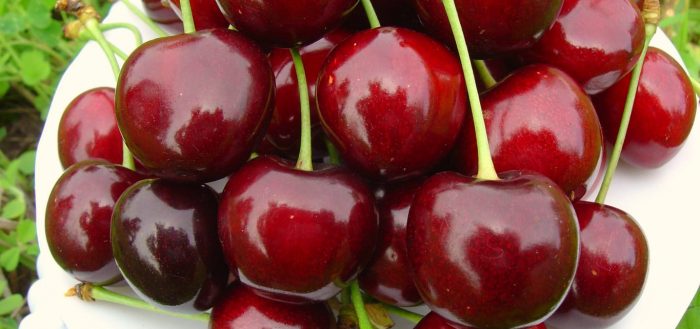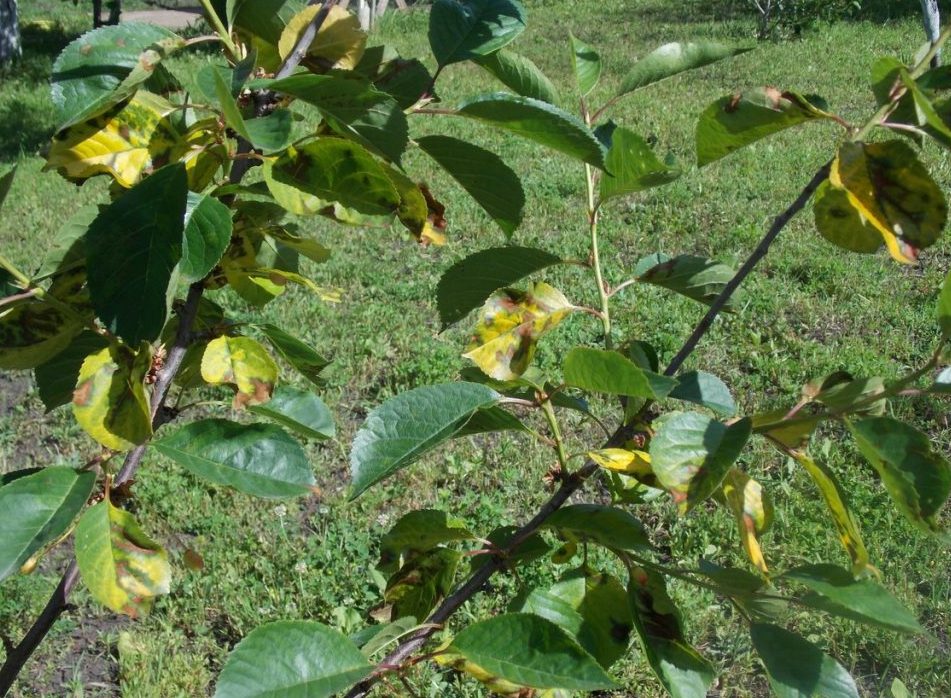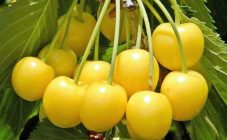Content:
The cultivation of cherries in Siberia requires compliance with certain rules. Growing cherries in Primorye is a little easier than in Siberia. This is due to the climatic features of this region, because the tree loves sunlight and warmth. The key to success is choosing the right variety.
Description and features of culture
The variety belongs to the genus Plum, the Pink family. A feature of the culture can be called the fact that trees grow quite quickly. The crown has the shape of a cone, in some plants it is ovoid. With age, the bark of the trunk changes its color from light brown to reddish or silvery. Most varieties have a horizontal root system. As a rule, in a seedling, the root grows intensively vertically, and in adult trees, the roots grow to the sides. The shape of the leaves is oblong with slightly pointed tips. The edges are edged with small teeth.
The flowering period begins shortly before the leaves are supposed to bloom on the tree. The flowers are mostly white, they are collected in an umbrella inflorescence. A drupe fruit with fleshy and juicy pulp develops on the tree.
Plants are self-fertile. In order for the tree to give the expected harvest, experienced gardeners recommend planting at least 3 to 4 trees in the garden.
How to properly plant cherries in spring in Siberia
The development of the tree and the yield depend on how correctly the seedling was chosen. In order to avoid mistakes, it is recommended to adhere to the following rules:
- Buy in specialty stores or nurseries. In this case, the seedling will meet all varietal characteristics.
- Give preference to a variety that has the necessary characteristics for growing in Siberia.
- It is better to choose seedlings that have reached 2 years of age. They take root faster.
- Particular attention should be paid to the root of the plant. It should be light brown in color, free from damage and dry areas.
To plant a seedling, you must choose a sunny place, without drafts, because this culture loves light. There should be no tall trees nearby. They will restrict the access of light to the branches of the tree, its leaves and fruits when ripe.
Groundwater on the site should not be located close to the surface of the earth, otherwise there is a risk of rot on the root system. Light fertile sandy loam or loamy soils are ideal for the successful cultivation of sweet cherries.
It is necessary to prepare a pit for planting in early autumn. For this, humus or compost is introduced into the soil. The site is well loosened, all weeds are destroyed on it and garbage is removed. If the soil acidity level is too high, liming is recommended.
After 7 - 10 days after that, fertilizing is applied to the ground. It is better to use mineral or nitrogen fertilizers for this. It is better to dig a hole for planting in 2 weeks. This is done so that the soil has time to settle. The dimensions of the planting pit are 90 X 110 cm. A wooden peg is driven in the center, which will become a support for the seedling. It should protrude 35 - 55 cm above the pit surface.
Under the roots of the tree, you need to pour a soil mixture of wood ash, superphosphate, compost and potassium sulfate, taken in equal amounts. This mixture must be poured into the bottom of the pit.The thickness of the layer is no more than 30 cm. After that, about 2 buckets of settled water should be poured into the pit. In this state, the pit should stand for 2 weeks.
The seedling is placed in the central part of the pit so that its root collar is 5 - 8 cm on the ground surface. The roots are gently straightened. The seedling is carefully covered with soil mixture, which is then carefully compacted and poured with 2 buckets of water. It is recommended to equip a hole around the tree, which will be used for watering. The circle near the trunk needs to be mulched. You can use peat, dry grass or hay for this. This will retain moisture in the soil after watering.
Siberian cherries need watering before the beginning of the flowering season, in the middle of summer, in the fall after leaf fall. Before watering, the near-stem circle is loosened, and after that it is mulched. Siberian cherry varieties react negatively to drought. If the summer is dry, the trees are watered more often.
Since all the minerals and components necessary for growth are introduced into the planting pit, the first feeding can be performed 2-3 years after planting. In early spring, dry nitrogen fertilizers are used, and in summer, they are dissolved in water. Mineral fertilizers are applied in the fall.
When growing cherries in Siberia, you need to form its crown. Shaping the crown of a tree into a bush will make it easier to tolerate cold temperatures in winter. Spring pruning of the crown is performed before the start of sap flow. In this case, the shoots are cut to 5 - 7 buds. Pruning should be done in such a way that the height of the tree does not exceed 3 m. Root shoots should be removed throughout the season, as well as crown thinning.
Cherries for Siberia: delicious winter-hardy varieties
To get a good harvest of cherries in the Siberian region, you need to choose the right crop variety. Siberian gardeners prefer these varieties:
- Zhurba.
- Drogan.
- Pink pearls.
- Iput.
- Cheremosh.
- In memory of Astakhov.
All of these varieties have characteristics that make it possible to grow cherries in Siberia. Among them are the following:
- Winter hardiness.
- Early maturity.
- Good yield.
- Frost resistance.
- Resistance to disease infection.
By following these simple recommendations for planting and caring for cherries in Siberia, you can harvest a generous harvest of berries even in the regions of Russia with harsh conditions: in Omsk, Novosibirsk, Krasnoyarsk, and the Urals.














